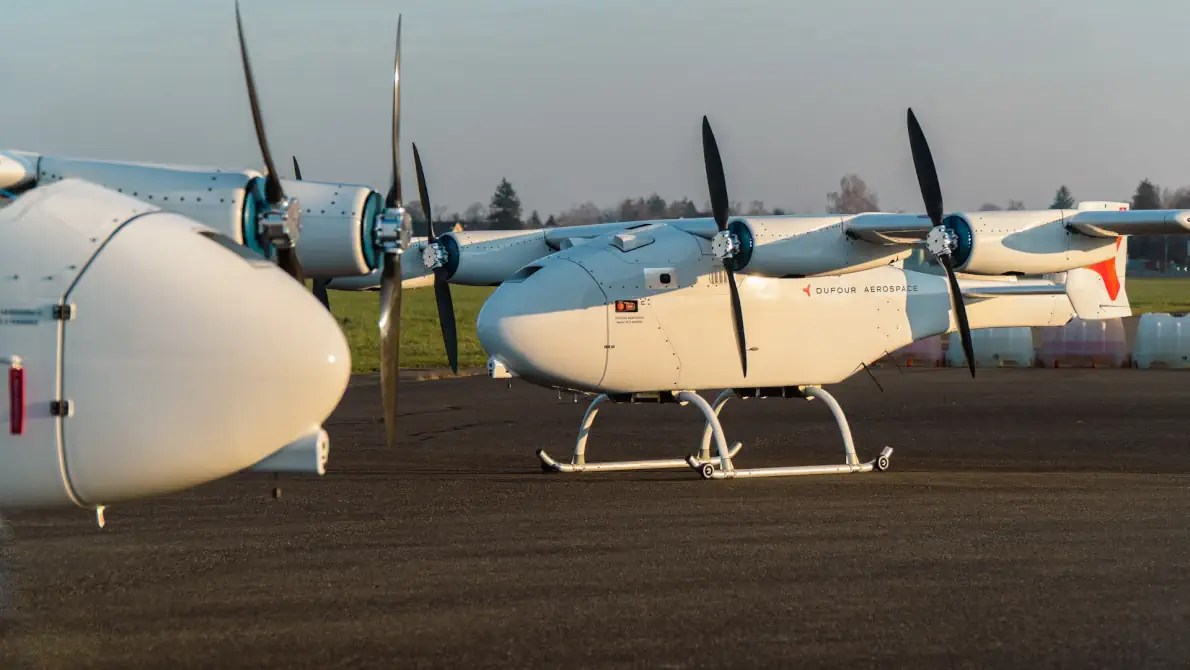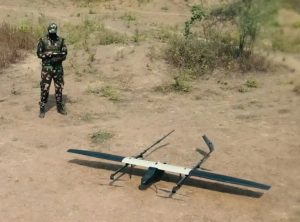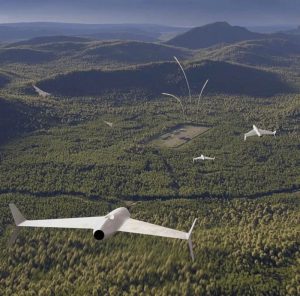From Lab to Life: How Dufour Aerospace’s Drones Are Transforming Medical Graft Delivery
In the 21st century, as time becomes ever more crucial in medicine and technology rapidly evolves, a remarkable revolution is unfolding above us. Dufour Aerospace, a Swiss leader in drone innovation, is reshaping medical logistics, especially in critical situations and remote locations. Let’s explore how Dufour’s drones are translating cutting-edge research into significant changes for medical graft delivery, impacting healthcare, logistics, and everyday life.
The Critical Need: Why Speedy Medical Graft Delivery Matters
Consider a grave accident in a secluded village or a transplant operation dependent on a timely graft or organ arrival. Each passing minute decreases the success odds. Traditionally, helicopters or ambulances have been the go-to solutions, but they involve high costs, logistical challenges, and struggle to quickly reach remote areas.
In isolated communities, mountainous territories, or weather-affected regions, essential supplies often face delays or complicated logistics, resulting in lower survival rates and higher expenses. This is where the era of advanced drones comes into play.
Dufour Aerospace: The Solution-Makers in the Sky
Dufour Aerospace is not just another drone company; they are dedicated to resolving mission-critical delivery issues, especially in healthcare. Their goal is to tackle complex cargo tasks by making them faster, safer, and eco-friendlier using hybrid-electric tilt-wing drones.
What makes their drones unique?
- Tilt-wing design: Capable of vertical takeoff and landing, like a helicopter, while flying as efficiently as an airplane. They require minimal space—just a small area, like a hospital rooftop or a clearing.
- Hybrid-electric propulsion: Their drones operate efficiently with a serial hybrid system, eliminating range anxiety associated with electric vehicles.
- Impressive payload and range: The Aero2, their flagship model, can transport 40 kg (about 88 lbs) over 400 km (around 250 miles), suitable for medical supplies, lab samples, or larger organs.
“We’re building aircraft that aren’t just engineering marvels—they are built to meet the stringent demands of emergency medicine,” states Simon Bendrey, Head of Design at Dufour Aerospace.
Real-World Impact: Dufour’s Medical Graft Delivery Mission in France
In a groundbreaking trial in France, Dufour Aerospace, in collaboration with Leeft and the CR2TI UMR 1064 Nantes laboratory at the CHU de Nantes hospital, accomplished a European-first drone transport of a medical graft.
How It Worked:
- The drone transported a valuable medical graft, preserved under strict medical protocols, avoiding typical transport delays due to traffic or adverse weather.
- The Aero2 and AeroMini10 drones executed the autonomous flight with expert supervision but minimal human input.
The result?
The delivery, equivalent to hours by road or an expensive helicopter ride, was achieved quickly, securely, and with reduced carbon emissions. The handover, from surgical teams to operational coordinators like Leeft, demonstrated seamless medical and aviation technology integration.
The Tech Behind the Revolution: Aero2 and AeroMini10
| Aircraft | Max Payload | Range | Unique Features |
|---|---|---|---|
| Aero2 | 40 kg | 400 km | Hybrid-electric, tilt-wing, no runway |
| AeroMini10 | Up to 10 kg | ~100 km | Compact, agile, fits in urban spaces |
- Aero2: Designed for long-distance tasks, like regional or hospital-to-clinic routes, is expected to cut fuel use by up to 98% compared to helicopters and reduce operational costs by 80%.
- AeroMini10: Ideal for short urban trips or quick hospital campus flights, showcasing its adaptability in ongoing trials in France.
Safety and Reliability:
- Redundant flight systems.
- Advanced navigation software.
- Complies with current and future EASA certification standards for European airspace.
How Do Dufour’s Drones Actually Save Lives?
The advantages are clear:
- Time savings: Drones can bypass traffic, delivering grafts directly from laboratories to surgeons, significantly enhancing transplant success rates.
- Accessibility: Drones reach areas that are challenging for helicopters—mountains, islands, remote paths, or disaster-hit zones.
- Eco-friendly: By utilizing hybrid-electric power, they significantly cut emissions, supporting sustainable infrastructure goals.
- Cost efficiency: Operating a drone is far less expensive than a helicopter, allowing healthcare budgets to stretch further.
Global Trends: Where Else Are Medical Delivery Drones Making Headlines?
Dufour stands at the forefront among companies developing large payload, long-range drones for healthcare logistics:
- In Sweden, in partnership with European Medical Drone, Dufour is set to deliver its first healthcare drones in 2024.
- Dufour’s AeroMini participated in civil-military drills in Sweden, showcasing its capability to deliver crucial supplies in large-scale medical operations.
Real Stories, Real People: The Human Side of Dufour’s Innovation
Every flight owes much to extensive lab work, passionate engineers, and a medical community eager to bridge technology and care.
- Prof. Julien Branchereau, a leading transplant surgeon, emphasizes the drones’ potential: “Every extra minute gained counts. Drones could revolutionize transplant logistics.”
- This project’s success stems from multidisciplinary collaboration: medical experts, drone pilots, software developers, and local authorities working closely together.
- Dufour’s team is a unique mix of pilots, engineers, and healthcare visionaries. “We’re building not only drones but bridges between technology and those in need,” says a team member.
Expert Tips: What Hospitals and Health Networks Need to Know
- Plan for Integration: Drones excel within coordinated emergency systems, not last-minute options.
- Regulatory Readiness: Collaborate with partners who understand both aviation and healthcare certification.
- Scalability: Begin with smaller cargo—lab samples, blood—before moving to larger items as infrastructure develops.
- Think Green: Drones enable organizations to achieve sustainability goals without compromising speed or reach.
Dufour’s “Secret Sauce”: The Tilt-Wing Advantage
Why is the tilt-wing design significant? Unlike quadcopters, which are limited to short hops, or helicopters, known for being noisy and costly, Dufour’s drones:
- Can ascend vertically and transition to airplane-like cruising for efficient speed.
- Land in tight spaces—a village field, a hospital roof, or disaster sites.
- Feature fewer components than tilt-rotor designs, reducing maintenance and enhancing reliability over numerous flights.
No wonder there’s a joke: “Move over, Black Hawk—there’s a new rescue bird!”
What’s Next? The Near-Future of Drone-Based Medical Logistics
- Larger aircraft: The upcoming Aero3 will transport up to 750 kg or eight passengers, paving the way for air ambulances and massive logistics.
- Broader adoption: As regulations evolve, more hospitals, disaster-response units, and rural postal services will embrace drones for deliveries.
- Integrated networks: Envision a coordinated system where drones manage handoffs of medical supplies, facilitated by advanced logistics software.
- Everyday impact: Picture life-saving deliveries to local clinics from the sky—not fantasy, but soon commonplace.
Closing Thoughts: From Lab Bench to Living Room
The narrative of Dufour Aerospace transcends advanced machinery and regulatory breakthroughs; it’s about real-world applications turning life-saving science into action, impacting individuals day by day. For families awaiting transplants, medical professionals racing against time, and isolated patients seeking premium care, these drones are redefining what’s feasible.
As technology takes to the skies, it’s the human stories—of hope, care, and ingenuity—that truly elevate this revolution. So next time you hear the faint hum above, remember: it could signify the future of medicine gracefully unfolding above us.













